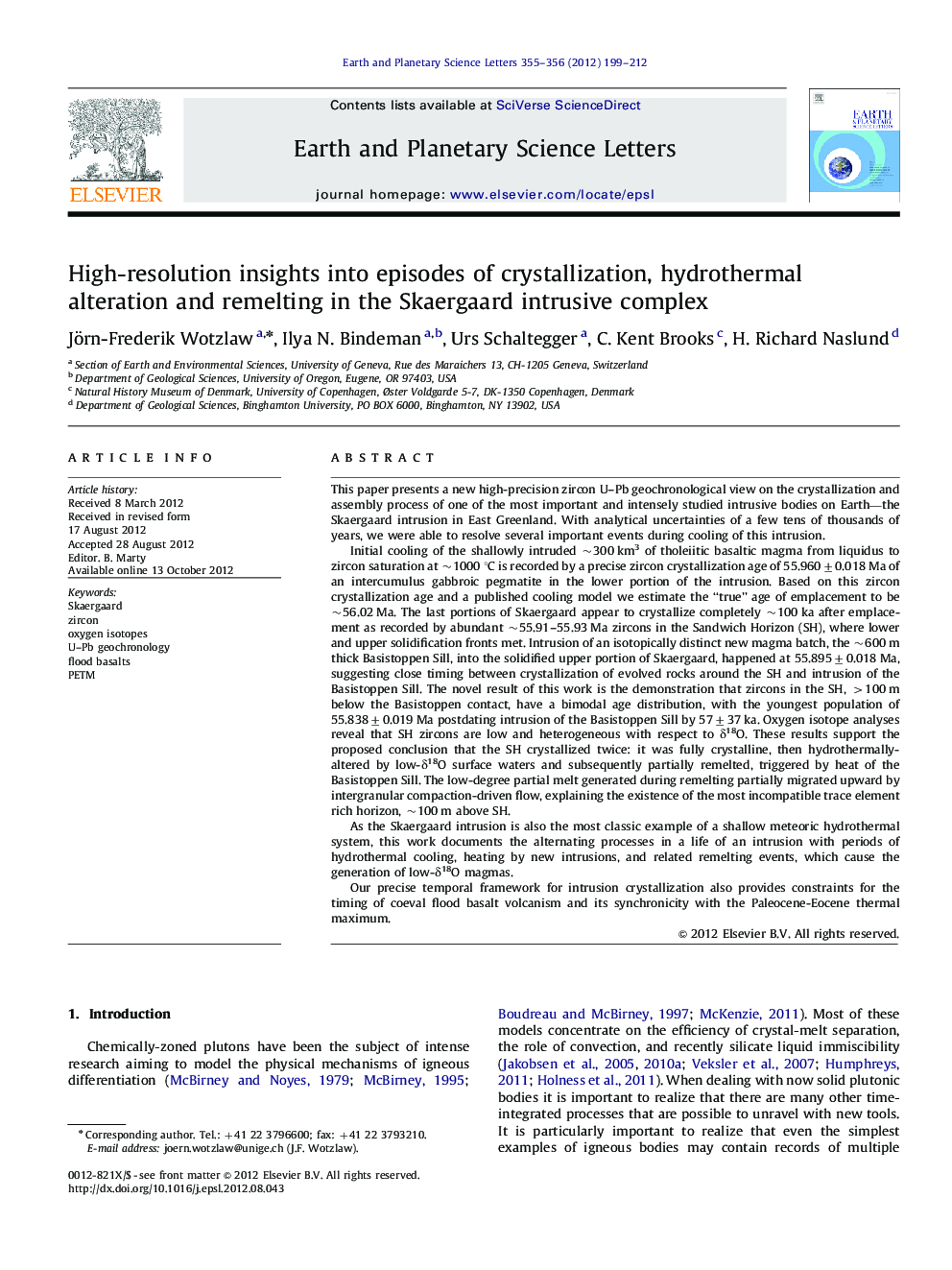| کد مقاله | کد نشریه | سال انتشار | مقاله انگلیسی | نسخه تمام متن |
|---|---|---|---|---|
| 4677371 | 1634795 | 2012 | 14 صفحه PDF | دانلود رایگان |

This paper presents a new high-precision zircon U–Pb geochronological view on the crystallization and assembly process of one of the most important and intensely studied intrusive bodies on Earth—the Skaergaard intrusion in East Greenland. With analytical uncertainties of a few tens of thousands of years, we were able to resolve several important events during cooling of this intrusion.Initial cooling of the shallowly intruded ∼300 km3 of tholeiitic basaltic magma from liquidus to zircon saturation at ∼1000 °C is recorded by a precise zircon crystallization age of 55.960±0.018 Ma of an intercumulus gabbroic pegmatite in the lower portion of the intrusion. Based on this zircon crystallization age and a published cooling model we estimate the “true” age of emplacement to be ∼56.02 Ma. The last portions of Skaergaard appear to crystallize completely ∼100 ka after emplacement as recorded by abundant ∼55.91–55.93 Ma zircons in the Sandwich Horizon (SH), where lower and upper solidification fronts met. Intrusion of an isotopically distinct new magma batch, the ∼600 m thick Basistoppen Sill, into the solidified upper portion of Skaergaard, happened at 55.895±0.018 Ma, suggesting close timing between crystallization of evolved rocks around the SH and intrusion of the Basistoppen Sill. The novel result of this work is the demonstration that zircons in the SH, >100 m below the Basistoppen contact, have a bimodal age distribution, with the youngest population of 55.838±0.019 Ma postdating intrusion of the Basistoppen Sill by 57±37 ka. Oxygen isotope analyses reveal that SH zircons are low and heterogeneous with respect to δ18O. These results support the proposed conclusion that the SH crystallized twice: it was fully crystalline, then hydrothermally-altered by low-δ18O surface waters and subsequently partially remelted, triggered by heat of the Basistoppen Sill. The low-degree partial melt generated during remelting partially migrated upward by intergranular compaction-driven flow, explaining the existence of the most incompatible trace element rich horizon, ∼100 m above SH.As the Skaergaard intrusion is also the most classic example of a shallow meteoric hydrothermal system, this work documents the alternating processes in a life of an intrusion with periods of hydrothermal cooling, heating by new intrusions, and related remelting events, which cause the generation of low-δ18O magmas.Our precise temporal framework for intrusion crystallization also provides constraints for the timing of coeval flood basalt volcanism and its synchronicity with the Paleocene-Eocene thermal maximum.
► We present high-precision zircon U–Pb geochronology for the Skaergaard intrusion.
► We identify several events during cooling of this classic intrusion.
► Late-stage low-δ 18O magma was generated by remelting triggered by sill emplacement.
► These results document the pulsating processes in the life of an intrusion.
► East Greenland flood basalts are synchronous with the PETM at the <100 ka level.
Journal: Earth and Planetary Science Letters - Volumes 355–356, 15 November 2012, Pages 199–212